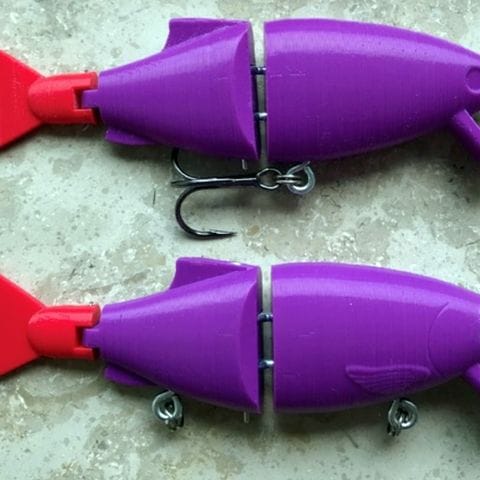
I’m looking at a 3D model and wondering if this could be the start of something interesting.
There are many applications of 3D printing technology, ranging from highly sophisticated interplanetary rocketry to desktop plastic dragons. In many cases it’s simply not yet feasible to use 3D printing for production purposes because the costs are still too high for each print.
However, prototyping is a far better use of the technology in the vast majority of applications at this stage. 3D printing allows a designer to very quickly produce a new iteration of a design for testing. And because the item is 3D printed, it can even be tested in a lab, or perhaps even out in the field.
Which, in this case, could be a lake.
The 3D model I saw was produced for France’s La Poste, who are touting their 3D print service as a source for interesting casual 3D models. One of their propositions, along with such items as chess board pieces and pen holders is the fishing lure shown above.
It looks like an easy 3D print, but that’s not the point here.
I realized that if someone happened to be a 3D designer AND was also a fishing enthusiast, they could very easily prototype a number of potential fishing lure designs.
This would be incredibly easy using even a desktop 3D printer, as there aren’t a lot of parts required. What varies is the shape, number of segments and the colors of each component. All of these are easily explored using 3D printing and 3D CAD design tools.
Thus it may be possible for a sufficiently motivated and trained fisher to prepare a number of lure styles that could be tested against selected fish species. It’s long been known that if you want to catch a particular kind of fish, you should carefully select equipment that is designed for that species.
But what if you could explore variations that could improve the odds of catching a particular type of fish?
That is now easily possible.
I’m wondering how much of this exploration actually takes place. In Thingiverse there appears to be something slightly over 100 items tagged with “fishing lure”. I don’t think that’s very much, as there are plenty of different species that would react differently to differently shaped and colored lures.
There should be more, and a continuous stream of newly developed lure styles that target particular fish species.
On the other hand, maybe that is indeed happening, but the fishers are keeping their successful results secret to enjoy the benefits – and win the fishing derbies.
That wouldn’t be the first – or last – time 3D print technology was kept secretive.

